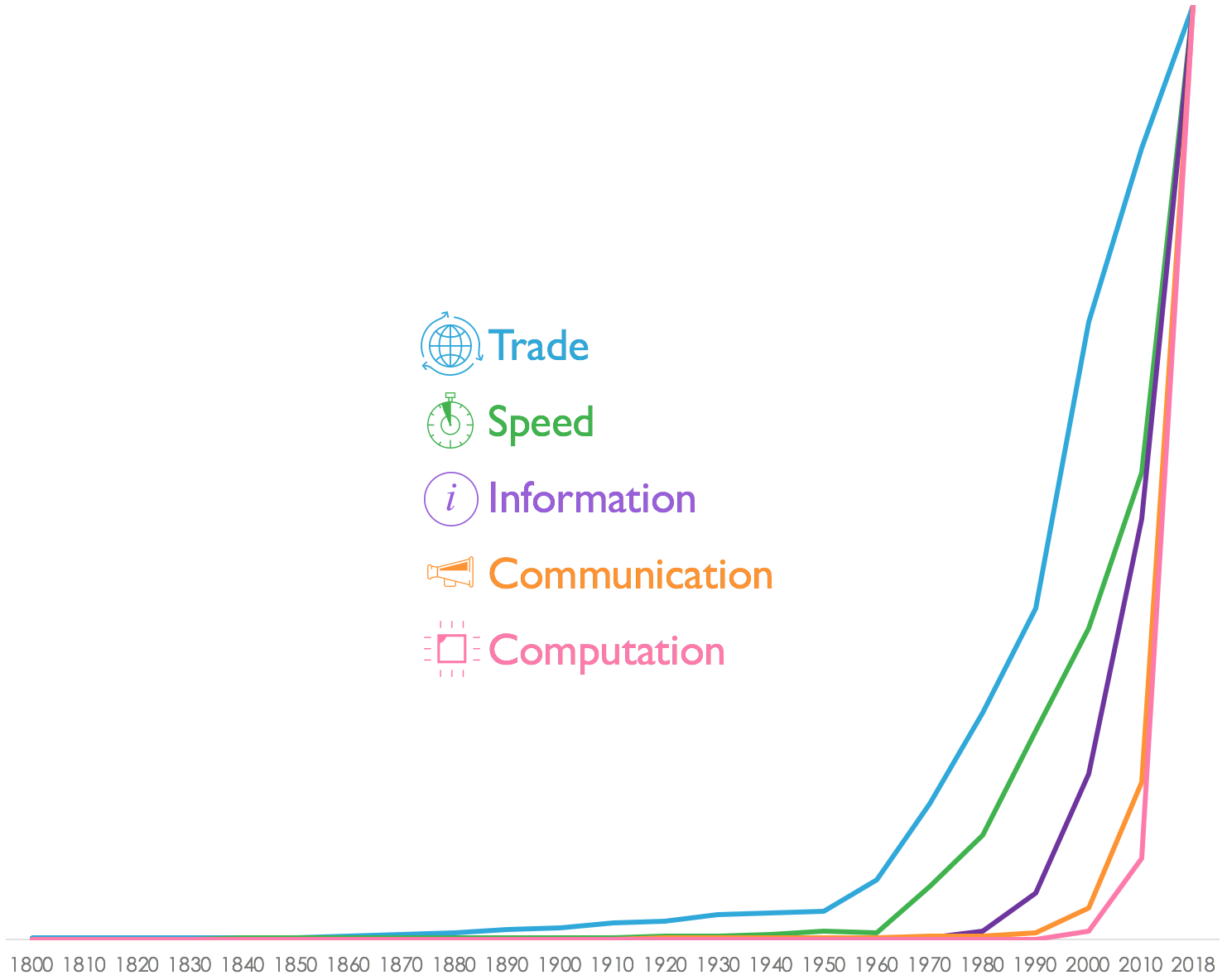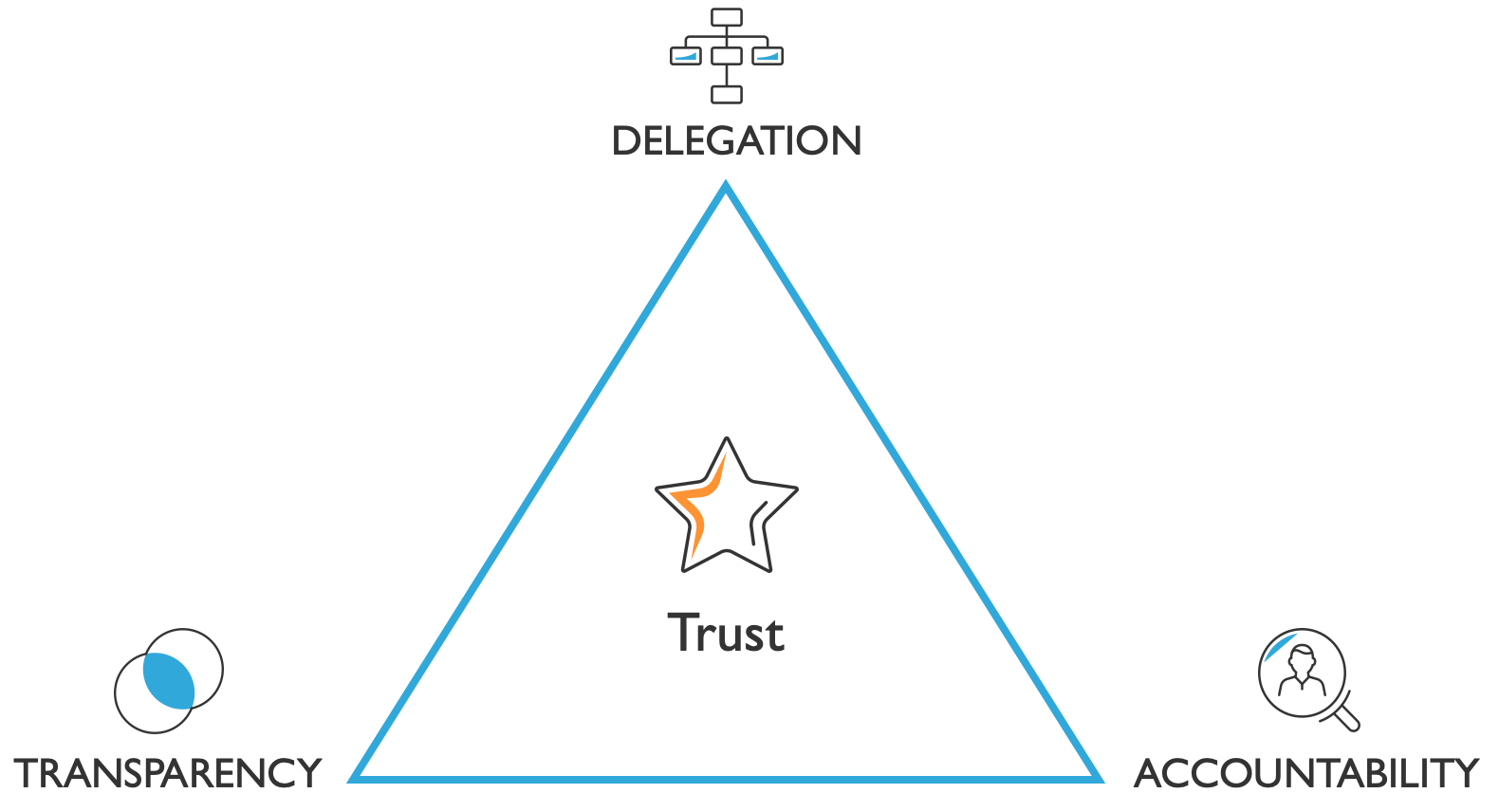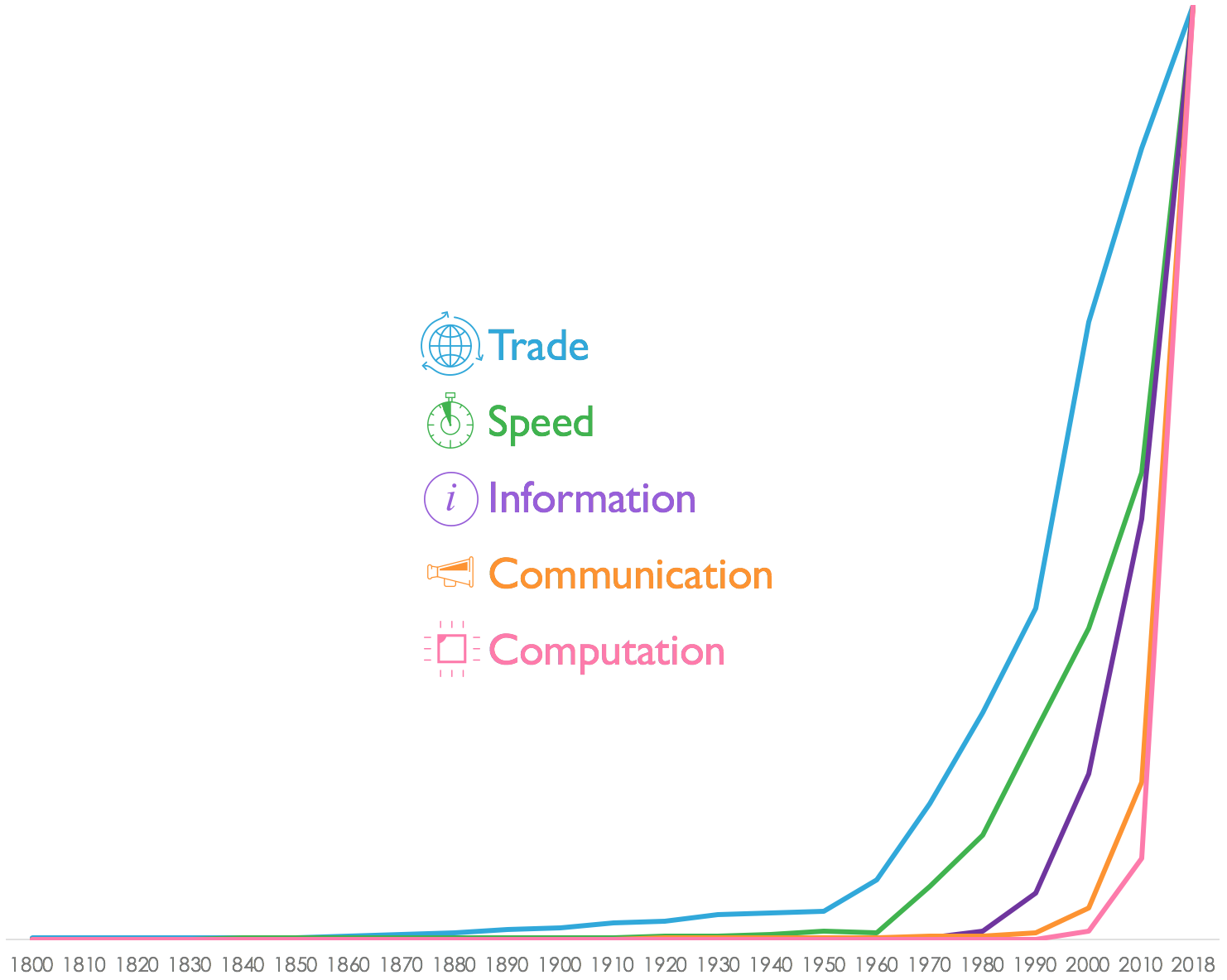It’s hard to overstate how much business success relies on better, faster decision making. Bain & Company research found that decision making effectiveness drives 95% of business performance. The UK Institute for Employment found that decision practices impact 50% of employee engagement. Your company’s decision practices have a huge impact on how your business and your employees perform.
At the same time, leaders face rapidly increasing pressure to innovate. Speed has always mattered in business, but the pressure from digital transformation is different. This graph of key economic measures shows how much different business is today. Slow and steady for hundreds of years, the rate of change suddenly exploded:
 Increase in global trade, vehicle speed, information, communication and computation since 1800.
Increase in global trade, vehicle speed, information, communication and computation since 1800.
Decisions are made for two reasons: to proactively make change happen, or to react to change when it occurs. So as change increases, decision making must keep pace. The fastest become market leaders. The slowest are pounded by change, falling farther and farther behind.
This change-driven pressure demands a new approach to business decision making. Our new research identifies 7 key decision practices that distinguish top performing innovative companies. Knowing about these practices sets the stage for improvement. But how do companies go about putting these practices in place?
Building Trust Through Delegation, Transparency and Accountability
In our work with companies like Cisco Systems, Sanofi Pasteur and Moss Adams, we’ve found that improving a process as fundamental as a company’s decision making depends on more than process and technology. Change also requires trust. Successful businesses lean into the need for trust by focusing on delegation, transparency and accountability.
- Delegating decisions to the edges empowers front-line employees who are closest to problems and most motivated and capable of coming up with creative solutions.
- Transparency improves communication up, down and across the matrix to keep people in the loop, ensure executive visibility, and increase buy-in even when people disagree.
- Accountability puts a decision feedback loop in place so good results are reinforced, bad results drive change, and everyone can trust the process.
These three points on the triangle reinforce each other to build the trust required to make organizational change happen. Executives are more comfortable delegating decisions when transparency gives clear visibility and accountability keeps results in focus. Transparency helps delegated decision makers get productive input from stakeholders while naturally creating a culture of accountability. And the people impacted by decisions are more capable and motivated to execute when the process is transparent and everyone is held accountable for the results of their decisions.

These three points on the triangle reinforce each other to build the trust required to make organizational change happen.
When the points of the triangle are strong and trust is high, companies have faster, better decision practices. They engage their employees, they innovate and adapt, they execute quickly and efficiently. When the triangle is weak, decision friction is everywhere. People are confused and out of sync, ideas are ignored, execution is too rigid and too slow.
A Tale of Two Companies
When trust is in place the difference is clear, as you can see in these quotes from people working in high performing innovative companies:
- “We clearly state who is able to make decisions. We don't have a ton of red tape.”
- “We feel free to speak our minds and advocate for what we think is the best choice. Everyone contributes and gets heard.”
- “There is more employee buy-in [because] we elicit feedback about decisions and people know where they are coming from.”
- “We make decisions fast and they spread like wildfire.”
- “We document decisions and share them to involve subordinates in the conversation.”
But in companies without trust, the story is one of surprise and confusion, wasted time and lost opportunity:
- “Too many times people high in the company deliver surprise decisions that catch everybody off guard.”
- “Getting the decision approved and finalized involves too much red tape and hand sitting.”
- “Valuable ideas are lost because people don't feel confident enough to speak up.”
- “We waste time with too many meetings. We talk and talk and talk.”
- “It is immensely hard to keep the details of decisions straight in our minds collectively. People are always confused or forget why we decided the way we did.”
Don’t be the company wasting time in pointless meetings. Be the company that makes decisions fast that spread like wildfire.
The Last Word -- Leaning Into Trust
As research director for worldwide digital transformation strategies, IDC’s Shawn Fitzgerald knows a lot about the demands and opportunities of this new world. “To compete, it is imperative for organizations to make smarter, more timely decisions at scale,” he says. “Insight into what decisions represent opens up more transparency across the enterprise, leading to more effective execution and speeding up digital transformation efforts.”
To get started, read more about the decision practices used by top companies and how inclusive decision making drives more effective decisions. Consider a decision-making benchmarking survey to measure where your company stands. Focus your initial efforts on decision processes that will have a big impact on your organization and give you early wins to build a foundation for change. And when you’re ready to make a change, lean into the trust imperative and contact us to help you be successful.

